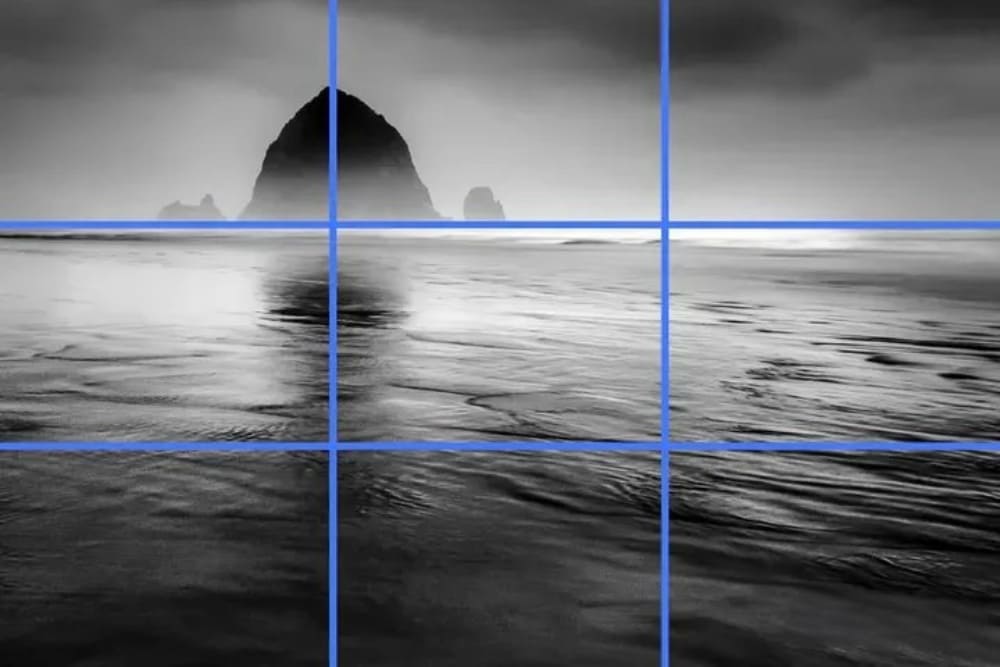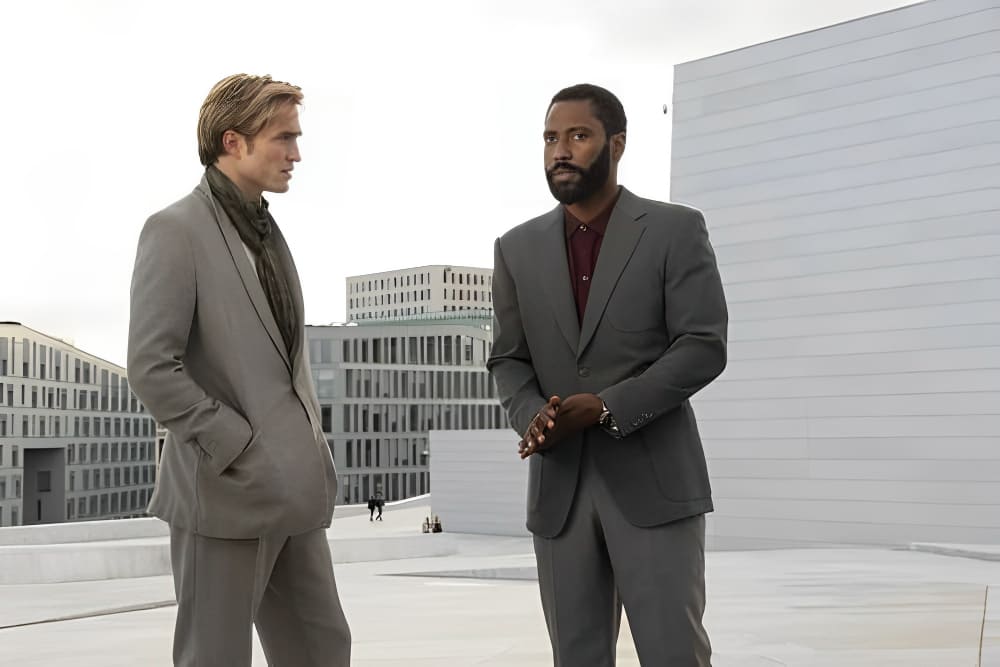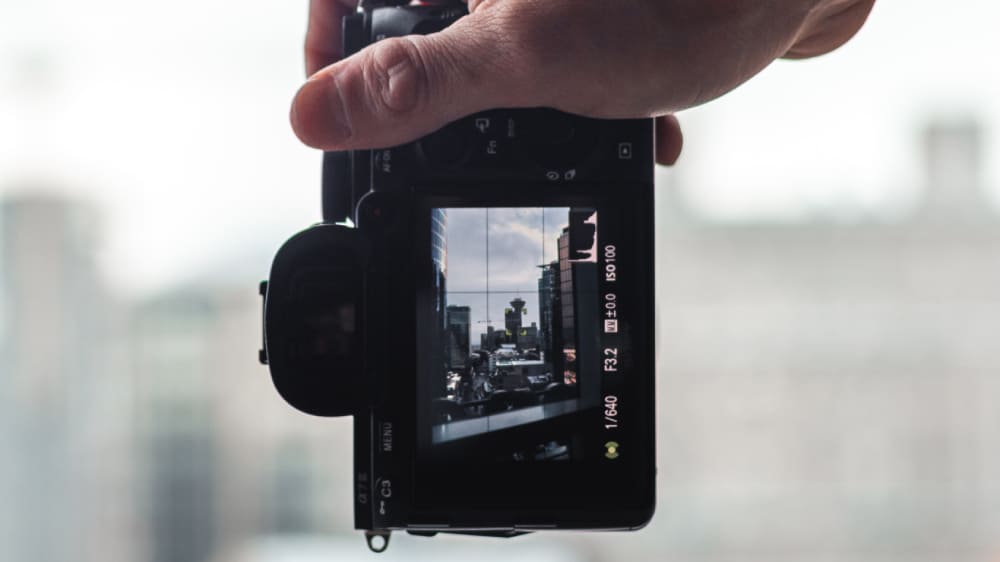Easy Guide - Understanding the Rule of Thirds in Photography
In the vast, seductive realm of photography, the Rule of Thirds reigns supreme, an enigmatic guide often whispered about, yet not entirely comprehended by all. It's an invisible grid etched onto the canvas of potential shots, a tool wielded by both budding and seasoned photographers alike.
This article promises to be your companion, unraveling the mystery of this ubiquitous rule. We'll embark on a journey, exploring when the Rule of Thirds can breathe life into your shots, and importantly, when it might be best to defy it.
Yes, it's a pillar of composition, a beacon for beginners and a lifeline for those grappling with the daunting challenge of composition. But remember, photography isn't a slave to rules, and this 'Rule of Thirds' is not the sole key to capturing that perfect shot.

In this article, you will learn:
- What Is the Rule of Thirds in Photography?
- Applying the Rule of Thirds in Photography
- When to Break From the Rule of Thirds?
- Final Thoughts About the Rule of Thirds
What Is the Rule of Thirds in Photography?
The Rule of Thirds is a widely utilized principle in the realm of photography and visual arts, serving as a fundamental technique to create well-balanced and intriguing compositions. It's a simple yet effective guideline that artists and photographers use to enhance the visual impact of their work.
This rule, in essence, breaks an image down into a 3x3 grid, effectively dividing the visual space into nine equal parts. Think of it as a tic-tac-toe board overlaid on your image, which results in four lines: two horizontal and two vertical, intersecting at four points.
The core principle of the Rule of Thirds is about leveraging this grid to position the vital elements of your composition, whether it's a person, a building, or a horizon.
Instead of placing the subject directly in the center, which can often result in static or boring compositions, this rule guides photographers to place subjects or key elements along the lines of the grid or at the intersecting points.
Observe the diagram provided below:

The intersections of these lines, often referred to as 'power points' or 'crash points', are said to be the spots where a viewer's eye is naturally drawn. By positioning your main subjects or focal points at these intersections, you can create a photo that is naturally pleasing to the eye.
Take a look at the photo below:

As you can see, the horizon and the main subject are both positioned along the grid:

The Rule of Thirds can be applied to any type of photography, such as portrait, landscape, or wildlife photography. It's not limited to any particular genre. Take a look at the photo below. In this photo, the little monkey perfectly aligns with the Rule of Thirds:

Let's take the movie "Tenet" by Christopher Nolan as an example. This movie extensively uses the Rule of Thirds composition technique by dividing the frame into equal thirds, with the subject at the intersection or along one of the lines.

We can see that in the movie, the positioning of the characters often follows the Rule of Thirds, creating a balanced visual distribution in the frame.

Please remember that while the Rule of Thirds is a powerful guideline for creating visually appealing images, it is not a strict requirement. In the following content, we will analyze when to use the rule of thirds and when to break the conventional composition of photography.
Applying the Rule of Thirds in Photography
The Rule of Thirds, a fundamental principle in the world of photography, serves as a simple reminder that off-center compositions can often yield visually appealing results.
Novice photographers frequently default to centering their subject, which, while a potent composition technique, can lead to a monotonous portfolio if overused.
The Rule of Thirds is a handy tool to break away from this repetitiveness and imbue your photographs with a richer sense of dynamism and intrigue. To employ this rule, envision a 3x3 grid overlaying your frame (many cameras and smartphones offer a feature to display this grid).
The idea is to position your subject along these grid lines or at their intersections, rather than consistently in the center.
This alternative composition might offer a fresh perspective and enhance the aesthetic appeal of your photos, making the Rule of Thirds an effective shortcut for those grappling with mastering composition.

When to Break From the Rule of Thirds?
However, it's important to remember that the Rule of Thirds is not a one-size-fits-all solution. Its main limitation lies in its rigidity; it doesn't adapt to the nuances of different subjects or scenarios.
There are instances where strict adherence to this rule might lead to compromising your composition or unintentionally omitting vital elements, turning it into a clichéd approach.
While the Rule of Thirds offers a helpful guideline for beginners to explore off-center compositions, it shouldn't be misconstrued as a mandate that subjects must always align with the grid's lines or intersections for a photo to be effective.
Off-center composition is a broad concept with numerous possibilities. Feel free to experiment with placing your subject slightly off-center or even in the extreme corners. The specific demands of the scene often dictate the most fitting composition strategy.
In the image below, you can see a deliberate placement of the subject at the edge of the frame to convey a sense of isolation using negative space:

If we were to use the Rule of Thirds to shoot this photo, it might fall into a cliché and not convey such a strong emotional message.
It's also crucial not to discount the power of centered composition. Despite the potential for redundancy if overused, it remains a potent composition technique, particularly when your scene is dominated by a single, pronounced subject:

Remember, the goal is to capture the essence of your subject in the most compelling way, whether that means adhering to the Rule of Thirds, embracing centered composition, or experimenting with other off-center placements.
Final Thoughts About the Rule of Thirds
The Rule of Thirds is a useful tool for beginners learning about photography composition. However, as you gain more experience, you'll discover that good composition isn't just about following rules. It's about understanding each photo's unique qualities and composing accordingly.
Different types of photos require different compositions. While the Rule of Thirds can enhance some photos, it's not the only way to create a great image.
In fact, any type of composition can be beautiful, and if you stick to the Rule of Thirds all the time, you may miss out on many opportunities to capture beauty.
As photographers, we know that great composition is key to capturing beautiful and imaginative works. While the Rule of Thirds is a popular technique, we shouldn't limit ourselves to it. By exploring different composition methods, we can create truly unique and stunning photographs.

However, the work doesn't stop there. In post-production editing, traditional keyboard and mouse operations can be distracting and take away from our focus on creating. This is where TourBox comes in, providing photographers with a smooth and immersive working experience.
With TourBox, photographers can stay engaged and focused on their creative process, allowing them to bring their artistic visions to life.